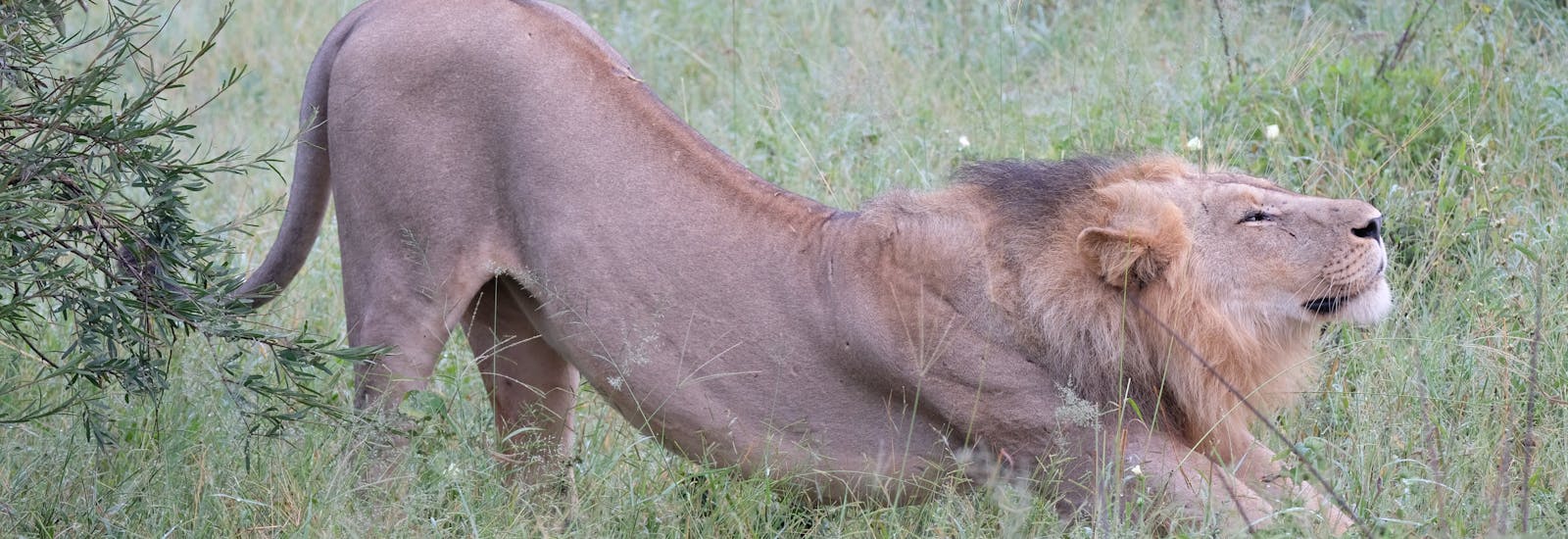
Rip roaring facts about the African lion (Infographic)
Commonly referred to as the king of the jungle, lions combine beauty with strength, and this makes them one of the most majestic animals in the world. The combination of brains and brawn means that they’re experts when it comes to raising their families, marking their territories, hunting and socialising.
However, despite their commanding presence, lions are considered to be vulnerable due to hunting, habitat loss and diseases.
In this infographic we‘ve collated a number of interesting facts about lions, and we’ve also explained how you can get involved and make a difference to its conservation status.

Read the stats from the lion infographic below!
Often called the king of the jungle, the African lion is more typically found in the savannahs and grasslands of sub-Saharan Africa.
The term African lion is used to collectively describe the several subspecies indigenous to Africa. One of the 'big cats', lions is the only big cats to live in groups called prides. Prides typically comprise up to three males, up to 12 females and their collective young. While female lions stay with the group for their whole life, males will eventually leave to establish new pride.
African Lion fact file
Status: Vulnerable
Population: Estimated between 30,000 and 100,000
Scientific name: Panthera leo
Size (Adult): Up to 1.2m tall (at the shoulder) and up to 2.5m long (without tail)
Weight (Adult): Up to 190kg
Max speed: 80km/h
Habitat: Scrubland, savannah, open woodland and grasslands
Typical territorial area: Males defend the pride's territory, which may include some 100 square miles.
Where can lions be found?
- Angola
- Botswana
- Burkina Faso
- Central African Republic
- Chad
- Ethiopia
- Kenya
- Mozambique
- Namibia
- South Africa
- Tanzania
- Uganda
- Zambia
- Zimbabwe
Did you know?
- Lions and tigers are so closely related that you would struggle to tell them apart if they were shaved.
- Lions' typical lifespan is between 10-14 years in the wild, whereas they can live up to 20 years in captivity.
- Male Lions are distinguished by their large manes. The mane is meant to look impressive to females and also serves to protect the neck in fights.
- Females are the group's primary hunters. They often work in teams to catch their prey. Lions are known to take on animals much larger than themselves.
- A lion can Leap as far as 11m (36ft).
- The lion population underwent a reduction of approximately 43% between 1993 and 2014
- Although adult lions have no natural predators, evidence suggests that the majority die violently from humans or other lions.
- The population has been reduced as a result of killings by farmers, whose livestock the lions eat, as well as from trophy hunting and habitat loss.
Volunteer with lions at African Conservation Experience
Learn more about lion conservation in their natural habitat with an unforgettable on-the-ground experience at African Conservation Experience.
At African Conservation Experience we work closely with lions, from conservation work to tracking and monitoring, rehabilitation and so much more.
If you’re interested in lion conservation work in Africa, you can start your adventure today and find the perfect lion conservation project for you.

